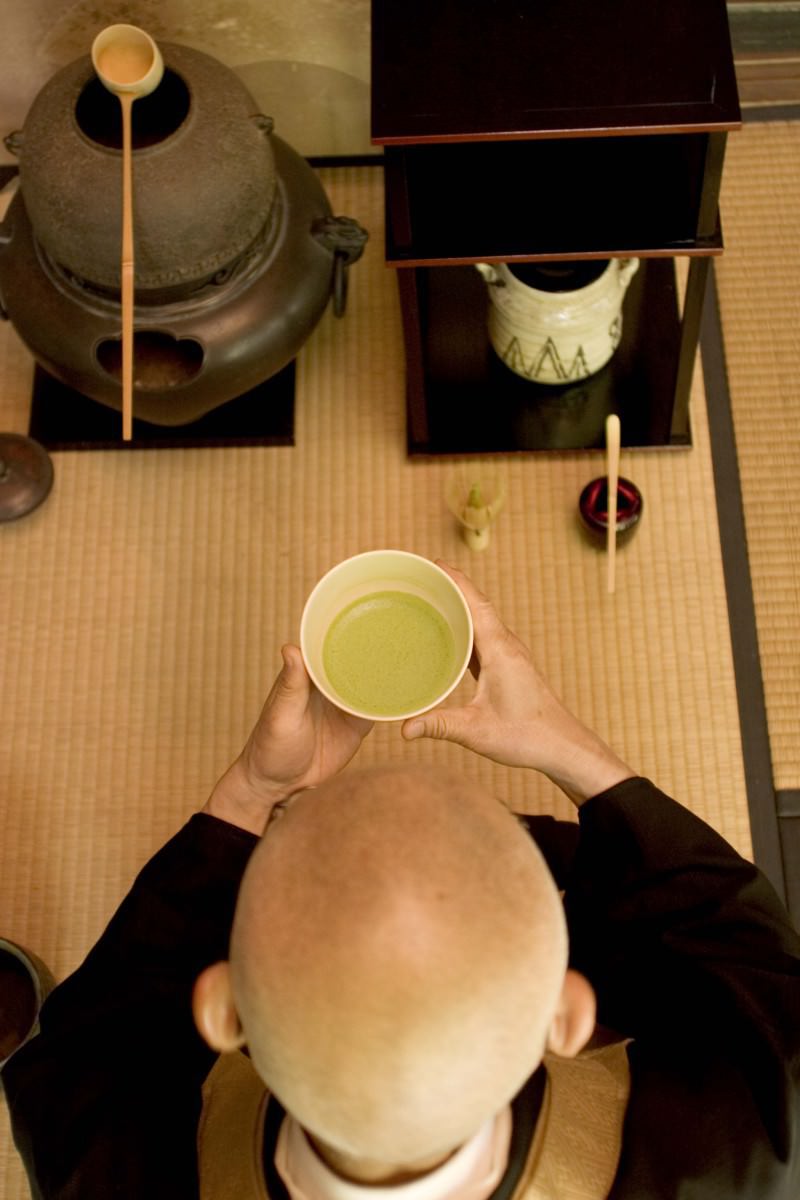TEA CEREMONY
Matcha is the tea of the famous Japanese tea ceremony, which was established around the year 1570 by zen master Sen-no-Rikyu. The tea ceremony is marked by four basic principles: Harmony (wa), Respect (kei), Purity (sei), Tranquility (jaku).
In the tea ceremony, every movement, every step and every moment is precisely defined. The matcha tea ceremony takes place in a designated room precisely four and a half mats in size (a tatami mat made of rice straw covers 170×85 cm or ten square feet).

THE CEREMONY
These dimensions for the tea room were stipulated as far back as the fifteenth century by a tea master named Jowo. The room is kept very plain and simple to help the guest to concentrate on the most essential thing: the tea. In the middle of the room there is a small stove and from the ceiling hangs a small kettle – often a veritable work of art. The seat of the host is surrounded by matcha bowls, tea caddies (natsume), a bamboo whisk, bamboo scoops and a bamboo ladle. The set-up changes frequently with the changing seasons. Even the age of the wood (visible in the cross-section thanks to the “growth rings”) used for charcoal is significant, as is its shape. Every utensil is symbolic, and the ceremony takes place according to a specific principle. The guests enter the room, and the host begins to prepare the matcha tea with slow, deliberate movements.
The fascinating thing about the Japanese tea ceremony is also the philosophy behind it: in Japanese, the tea ceremony is called “chado” or “sado”, which means “the way of tea”. And that is precisely how the venerable masters see it. Even after 60 years of performing the tea ceremony they still have more to learn. They are merely a little bit further ahead along the way of tea.

